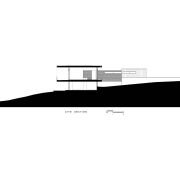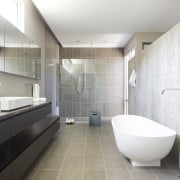Contemporary, transparent house with aluminium and concrete sidings, connected garage and river views
Modern riverside home with cantilevered upper level and open-plan interiors by architect Mark Peters of Studio Dwell
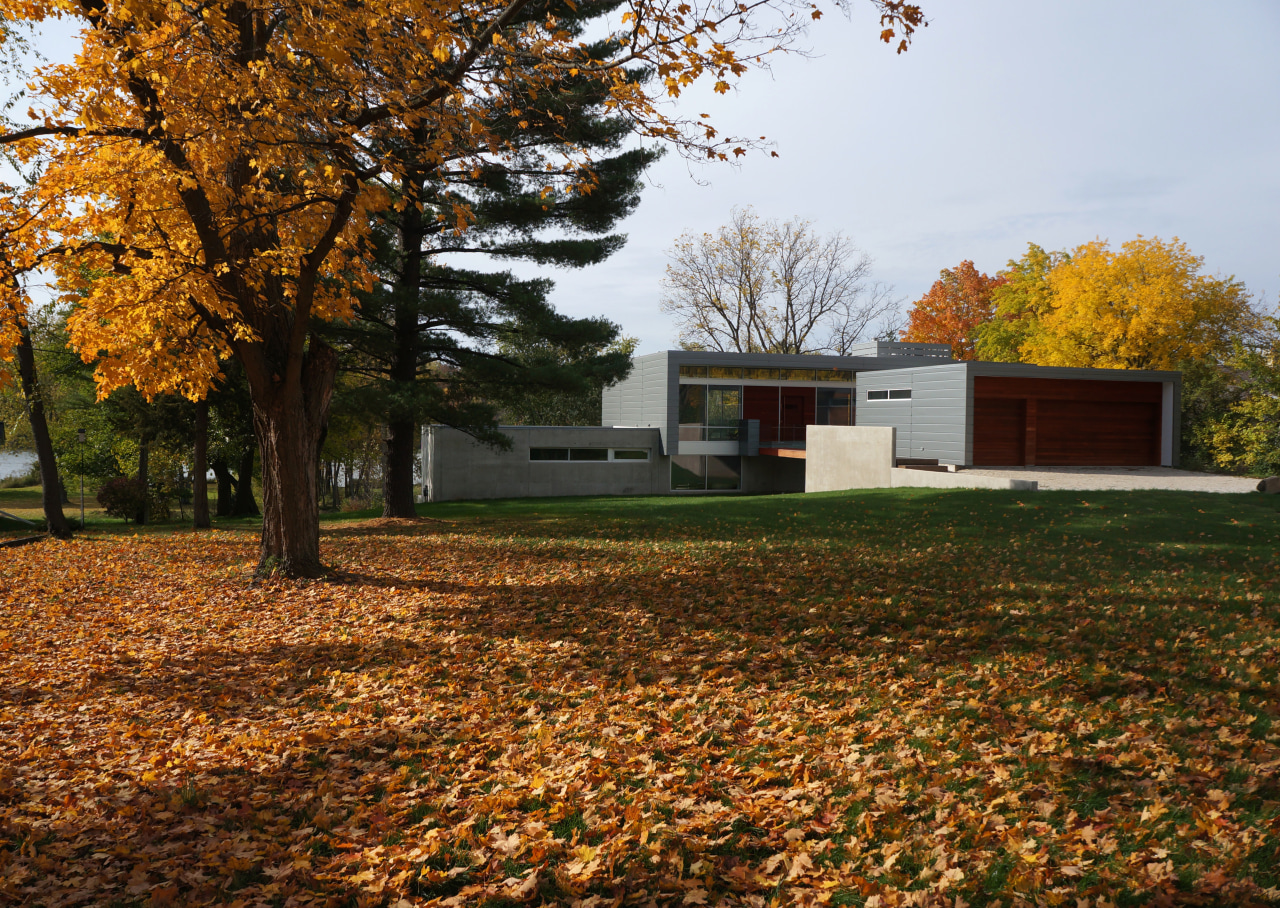
The higher you go, the better the views. This simple premise can be enough for an architect to turn a house on its head, positioning the living areas upstairs and the bedrooms downstairs.
This large riverside home by architect Mark Peters of Studio Dwell offers a case in point. The owners requested a house that responded to its site, framing the outlooks of the natural grass terrain running down to the river, says Peters.
"To maximise the river setting, the traditional arrangement of public and private spaces was inverted. And to further optimise the outlooks, the upper level is largely transparent, meaningsomeone approaching the house can look right through the interior to the views beyond."
While the home's front and rear facades on the top floor are essentially walls of glass, a quite different treatment was required for the sides.
"There are neighbours in close proximity to left and right, so the side walls have narrow clerestory windows that admit natural light but retain privacy. The street side of the downstairs master wing has similar slot windows."
From the curving approach road, the house has a strong sculptural presence that celebrates simple box-like forms. Seen from the rear, the upper level features an exposed, cantilevered terrace and roof. This is suspended over the lower level which is partially nestled into the hill, providing sun protection and a connection to the land. The design helps cool the house over summer and offers wind protection in winter.
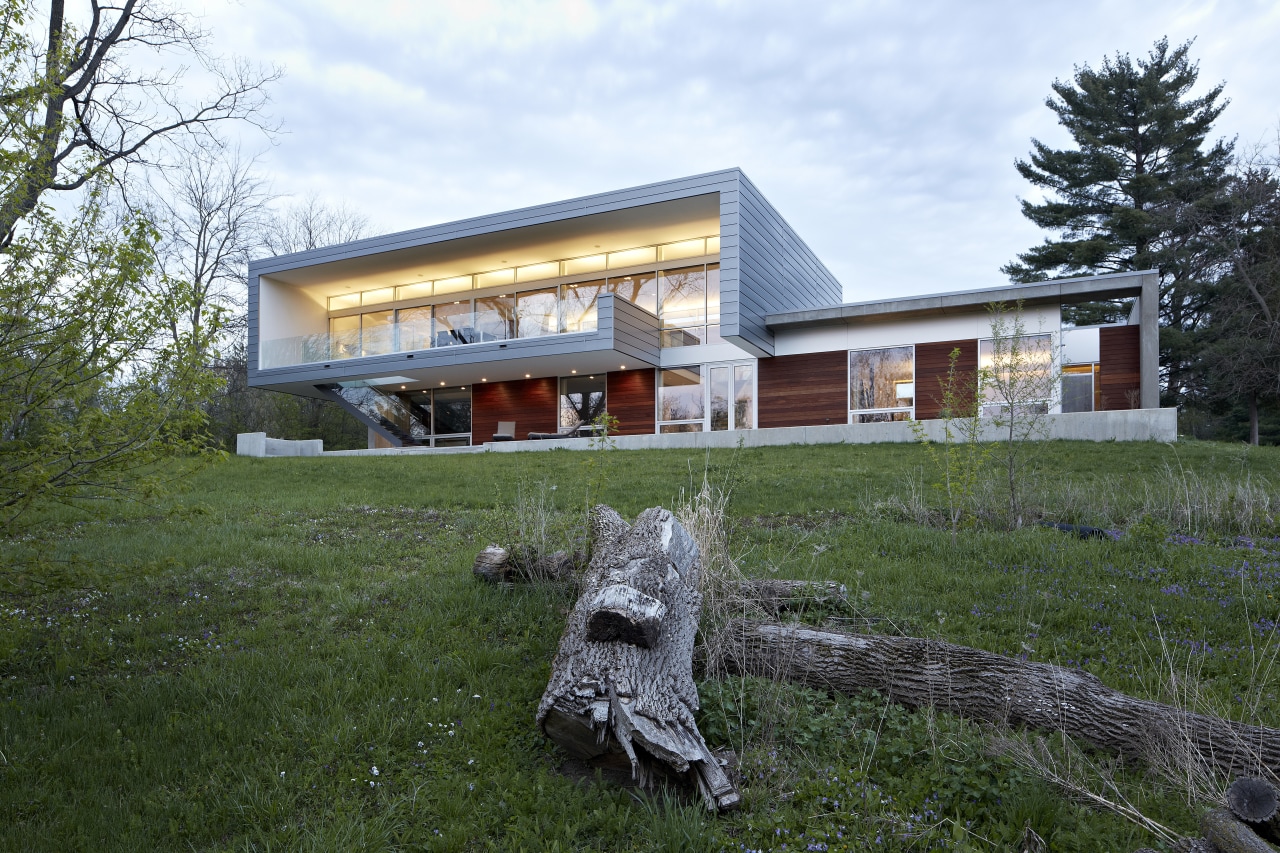
"The cantilevered framework is also a visual feature," says Peters. "It runs up from the ground floor master wing, across the roof, then down and back across to form the base of the deck. From there, it turns upwards again, forming the deck's side balustrade. The result is a crisp, yet functional architectural flourish."
The exterior highlights a simple palette of sustainable and highly durable materials. The base of the house is in exposed concrete with the upper storey clad in long anodised aluminium panels, specified in a complementary charcoal tone. Both of these cladding treatments are accented at several points with e®pe wood for balance and warmth.
A distinctive entry adds to the street appeal and further encourages an appreciation of the wider setting. To minimise the footprint on the land, the house and double garage are separated, but also connected by a suspended tube element that continues as a distinct form on the interior. This forms the internal, private entry from the garage to the interior and is the only enclosed space on the top floor. It includes a mud room and powder room in the external section.
Guests, on the other hand, enjoy a different arrival experience. They reach the house via an open walkway that runs alongside the tube. This pedestrian bridge suspends visitors over the landscaped hill, inviting them to take in the wider surroundings. These is also a view right though the interior to the river from the path to the large front doors. The walkway floor is in e®pe, an exotic hardwood, as is the cladding on the internal access. And it is the choice of surfaces generally that helps ground the house in its natural setting.
Pivoting double front doors open to reveal a freestanding wall that arrests the immediate impact of the dramatic setting. Beyond this to the left, there is a glass balustrade and beyond that, a double height void with an exposed steel staircase.
"Part of the brief was to have plenty of wall space to hang the owners' substantial collection of artworks, and this void effectively doubles as an art gallery," says Peters. "A sculpture of a warrior and horse fixed high on the wall can be appreciated from both levels, as well as through the window from the pedestrian bridge."
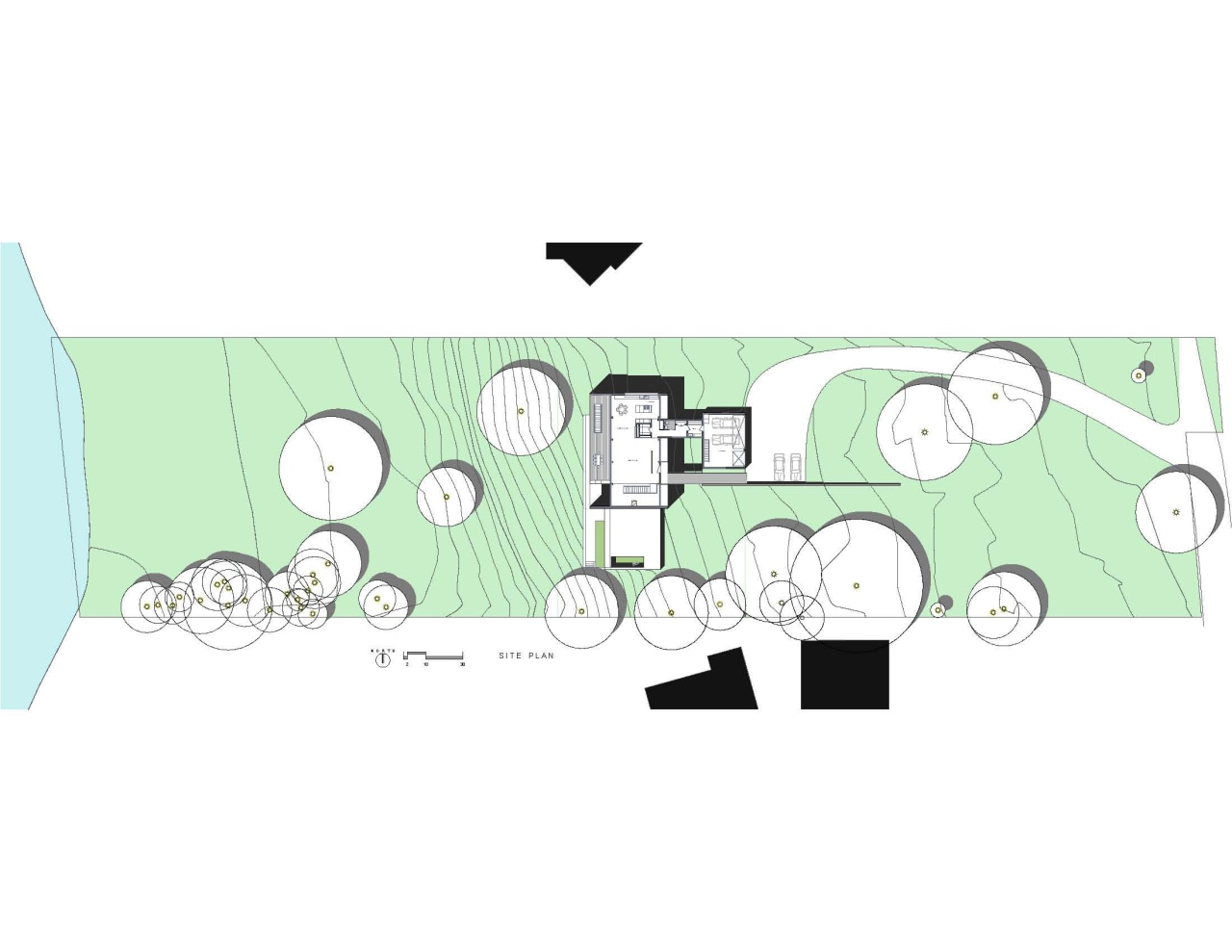
The owners have many smaller art pieces, too, and elongated display niches were built into the white walls to accommodate these.
Looking to the right, the indoor section of the entryway houses a fireplace on the open side and a pantry, storage components and an oven wall on the far side, where the kitchen is located. This area cantilevers off the side of the home, optimising light and views for the chef.
Downstairs, the bunker-like master suite wing extends out from the other side of the home. There are also three large bedrooms and a shared bathroom at this level. This private floor is carpeted except for the double-height void, which has large format, sound-absorbent tiles.
Other finishes on the interior include stained walnut flooring, e®pe, glass and steel.
"Openness and transparency are the home's predominant character traits," says Peters. "Even the grey steel staircase has open stairs so you can see right through it to the scenery."
Credit list
Architect
Engineers
Renderers
Exterior finishes
Landscaping
Windows
Doors
Hinges
Kitchen cabinetry and custom woodwork
Interior stairs
Sculpture shelf
Flooring
Lighting controls
Design consultant
General contractor
Structural system
Balustrade
Roofing
Skylights
Hardware locksets
Paints and stains
Fireplace
Paneling
Lighting
Story by: Charles Moxham
Photography by: Marty Peters
Home kitchen bathroom commercial design
Personality plus
Diving into nature
Classic looks, contemporary efficiency
Home Trends Vol. 31/6
Trends Home brings you the best homes, kitchens and bathrooms, both local and international. Each issue is packed with g...
Read More

